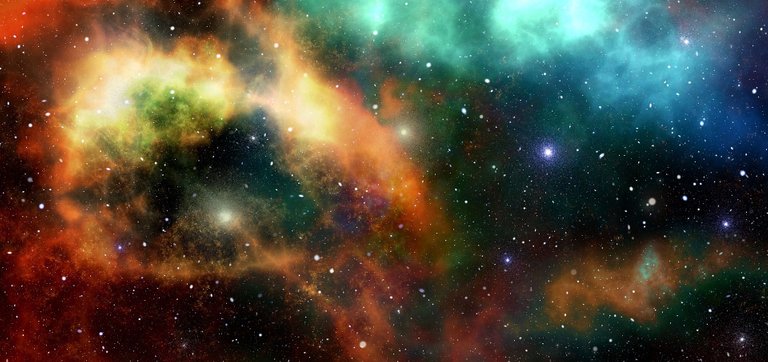Finding Dark Matter Clouds With Gravitational Waves
If dark matter is made from ultra-light bosons it could be creating clouds around rotating black holes. These clouds could perhaps be slowing down these black holes while creating specific gravitational waves.

Image by Gerd Altmann from Pixabay
- Be also sure to check out my other posts and follow me @kralizec and subscribe to my Youtube channel at Kralizec Gaming Youtube Channel
The hunt for dark matter continues. And the finish line is nowhere to be found. One of the options are particles we haven’t seen yet such as ultra-light bosons. Bosons are a category of particles with a symmetrical wave function and a full-spin such as photons or Higgs-bosons. Some of our models suggest the existence of so far undiscovered bosons with very little mass and thus candidates for dark matter.
Lilli Sun – a researcher of a very large team at OzGrav says the problem lies in the fact that ultra-light bosons are extremely hard to detect here on Earth. If they do exist they only very rarely interact with regular matter. That is why Sun and her colleagues are searching for them in space. They started with the idea that dark matter – as far as we know – interacts mostly through the force of gravity and thus they are tracking it down using gravitational waves.
Currently, we are detecting gravitational waves that come from far-away collisions of extreme objects such as black holes or neutron stars. But gravitational waves are also created in much less spectacular events. We just need to try harder to detect them.
Sun and her colleagues are convinced that if dark matter is made up of ultra-light bosons they could be creating clouds around rotating black holes. These black holes usually rotate insanely quickly and the cloud of dark matter should be slowing their rotational speed over time. If the cloud will be getting smaller thanks to the annihilation of the ultra-light bosons a specific type of gravitational waves should be created and we could perhaps track them down.
The researchers believe that black holes may be capturing gigantic amounts of ultra-light bosons (if they exist). So, Sun and her colleagues analyzed data from the gravitational observatory aLIGO. Sadly, they found nothing so far but they aren’t giving up.
As it tends to be the case, even their current effort wasn’t pointless. They eliminated certain types of bosons and certain types of predicted boson clouds. Their results show that in the Milky Way there isn’t a certain type of boson clouds that would be younger than 1,000 years and that there are no boson clouds in a distance of 3,260 light-years from Earth younger than 10 million years. This is because the gravitational signal of boson clouds should weaken with their age.
Sources:
- If you like the content I’m producing about science maybe you will like the content I produce about gaming as well! Be sure to check out my other posts!
In my childhood, I wanted to be a astronomer, and since then I had quite a pack of books on cosmology and big bang theory.
Science classes mainly focused on classical newtonian and latest electronics, semiconductor studies,
But, black holes and detecting gravitational waves are something which attract most science lovers.Same to me.
Good write, and take my greet, @kralizec ..
👍